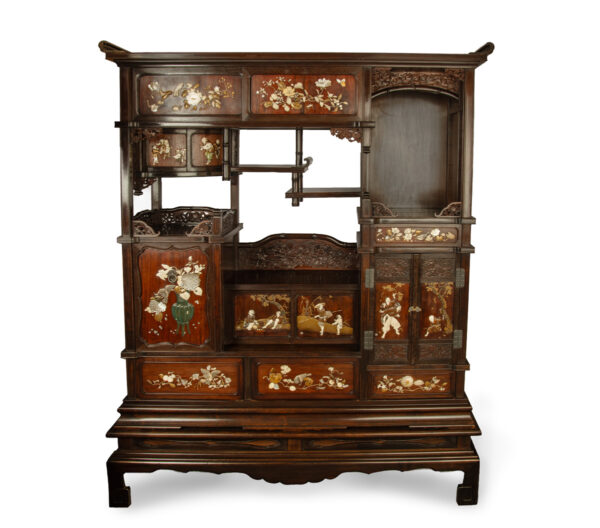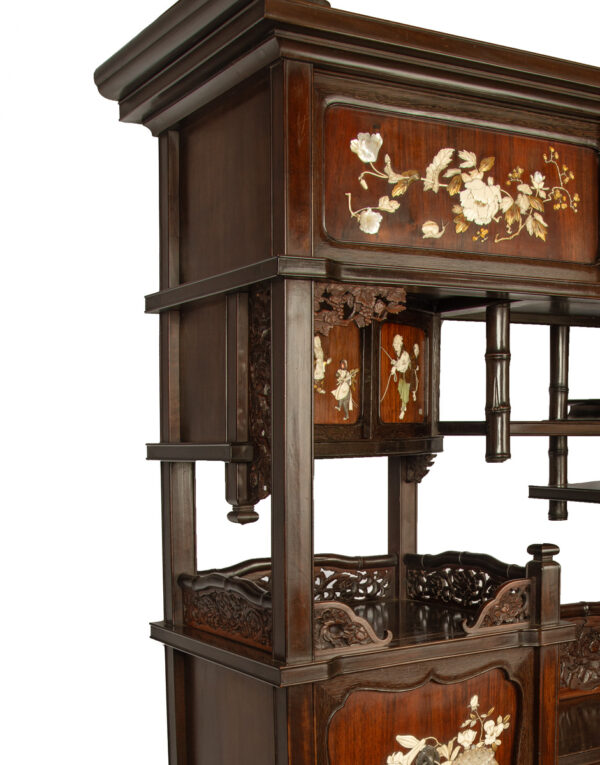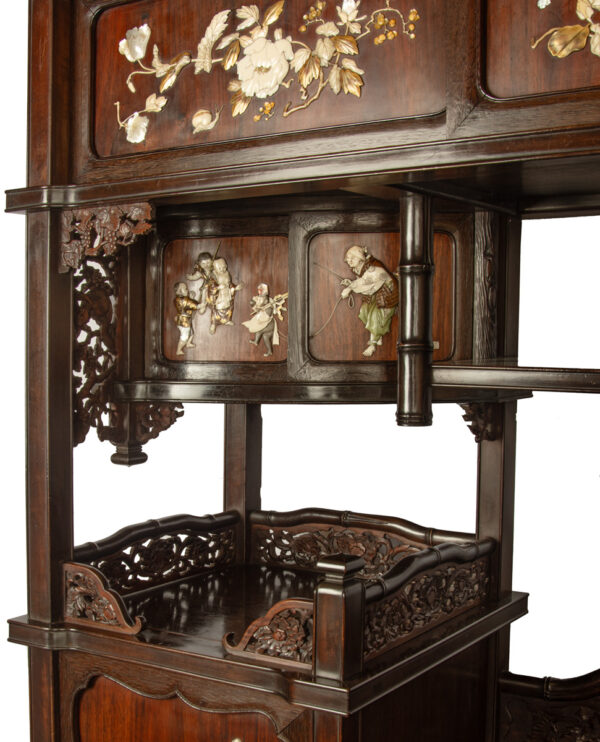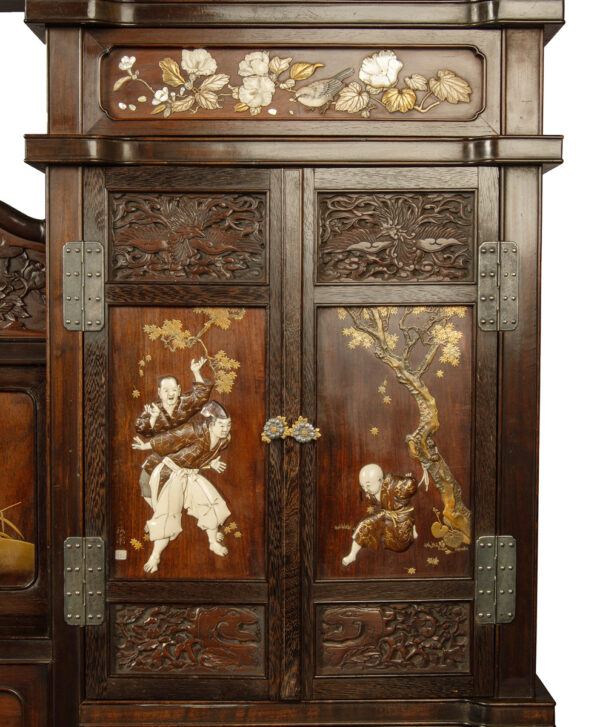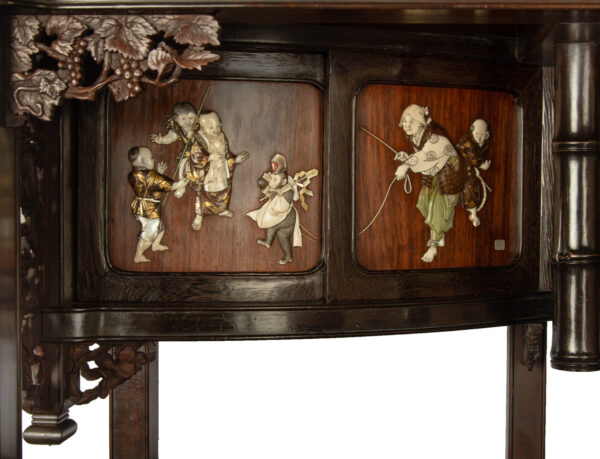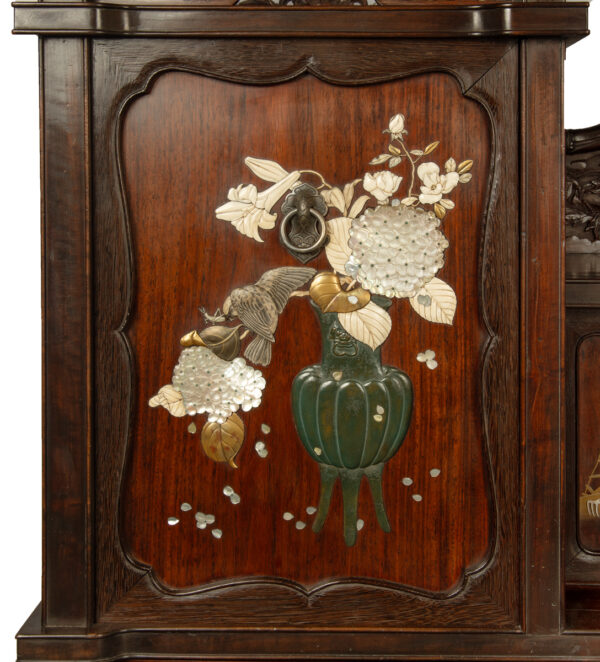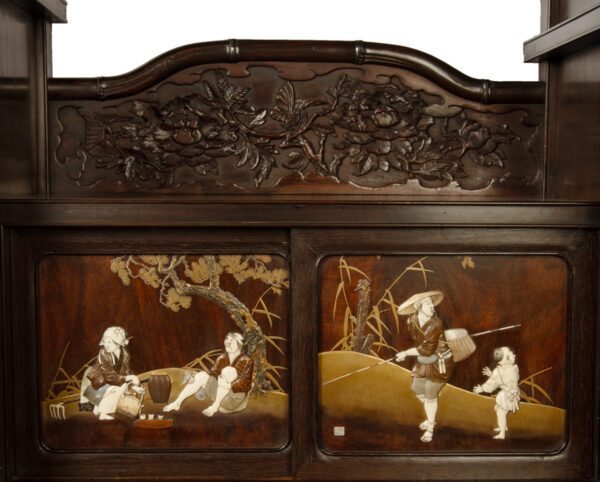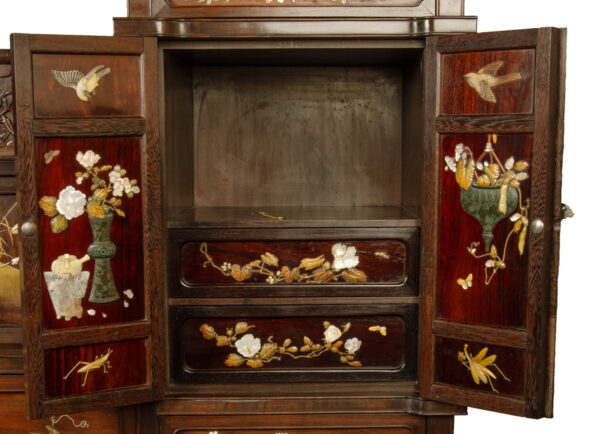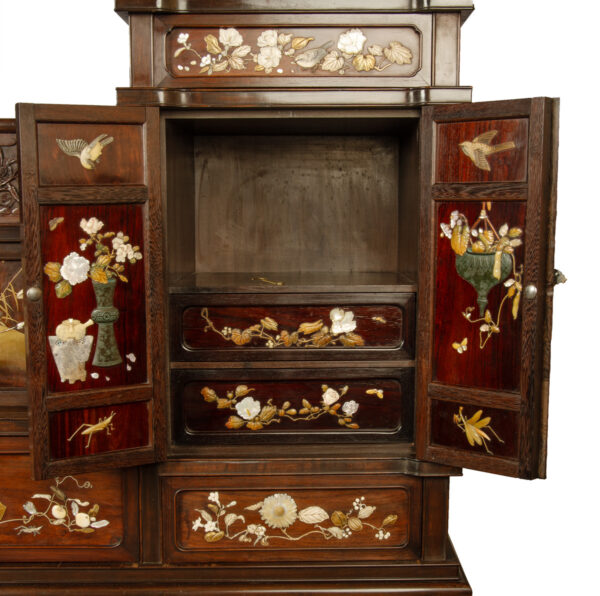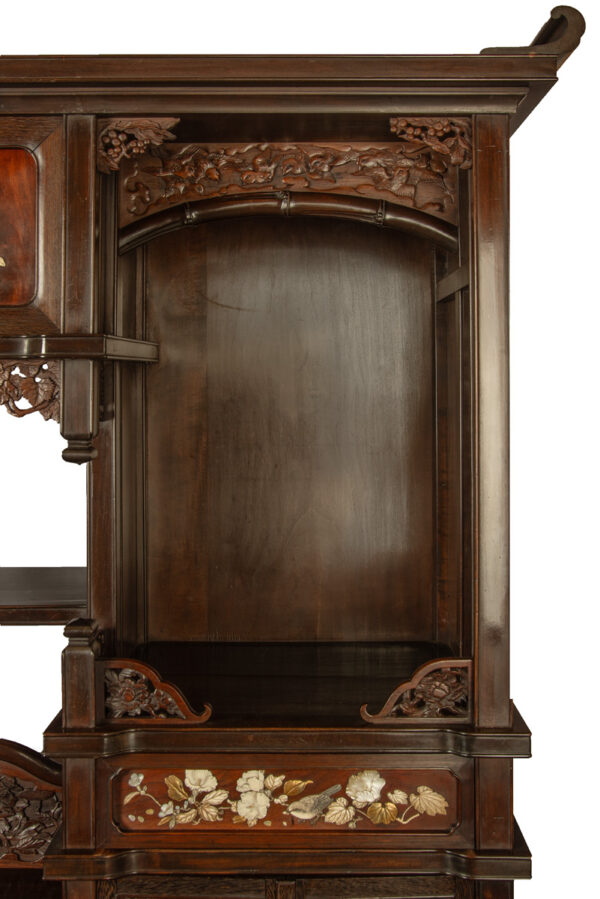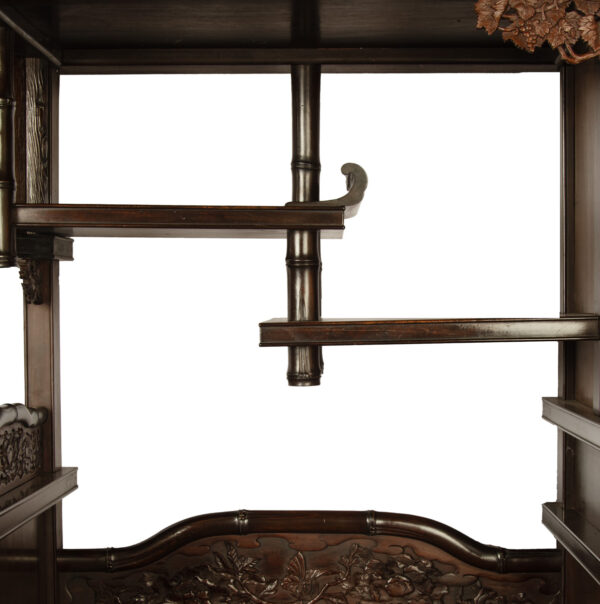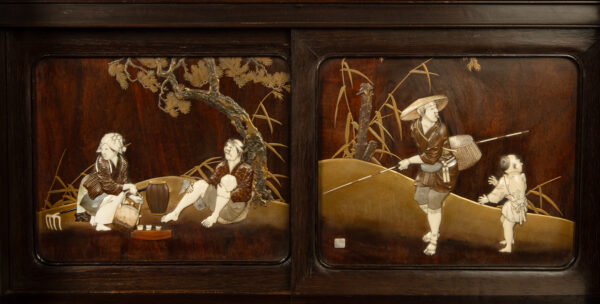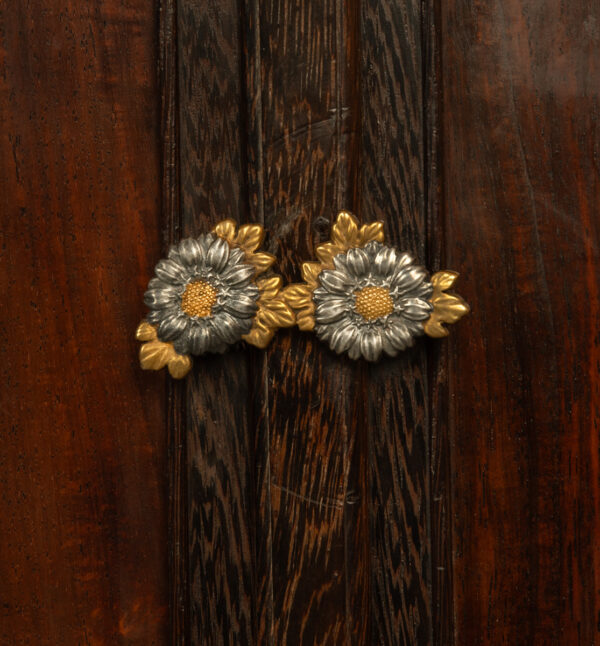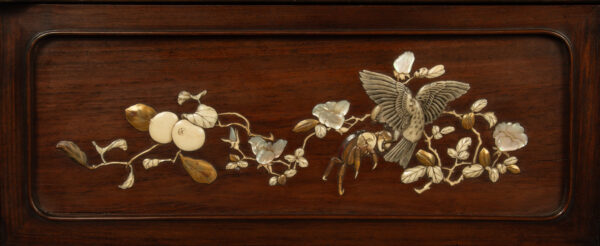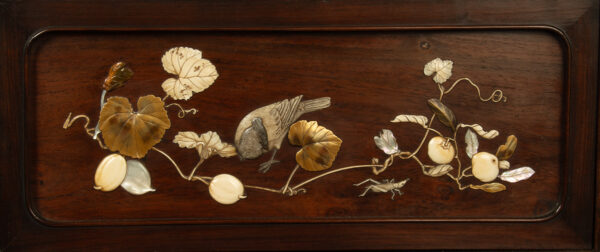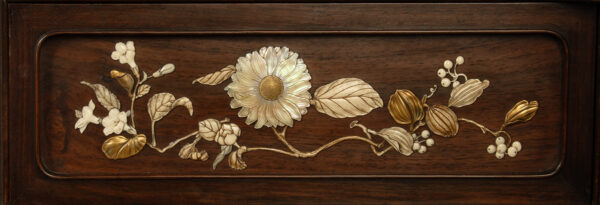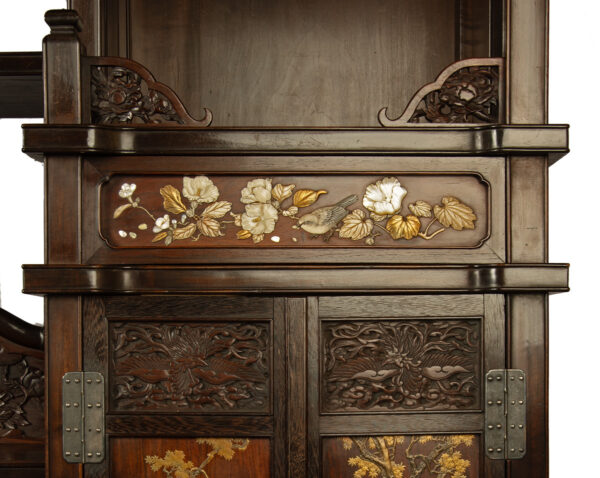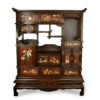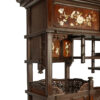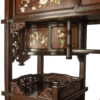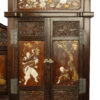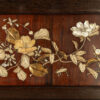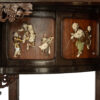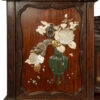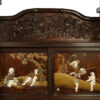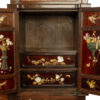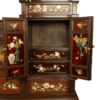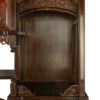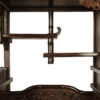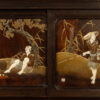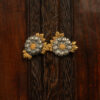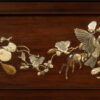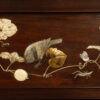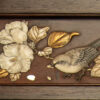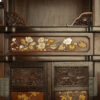As part of our Japanese works of art collection we are delighted to offer this exceptionally fine quality Meiji Period (1868-1912) Shodana display cabinet. The main body of this cabinet is formed from a native hardwood standing upon a similar scrolling base, the staggered display shelves and cabinet sides are decorated with carved fretwork depicting birds in flight and flora. The main Shibayama style decoration is exquisitely crafted with gold lacquer, ivory, abalone as well as various colour hardstones adorning the iron wood door panels and drawer fronts, the artist/s have signed and sealed the panels in various places. The main theme of birds, insects and flora continues throughout much of the decoration, however there are some most unusual scenes amongst the multiple panels including a Sarumawashi (monkey trainer) surrounded by children at play, another couple resting beneath a tree pouring a kettle as a father and son catch insects. The larger left hand panel is decorated with a delightful display of hydrangea and other flora within a stone vase upon which a bird lands to pluck an insect, this panel lifts out to reveal a large storage space, indeed this cabinet has been perfectly designed for exterior display as well as interior storage. For me the most interesting scene adorns the pair of doors to the right of the cabinet and tells the story of Sesshu Toyo (1420-1506) arguably Japan’s most famous painter. (see literature). This pair of doors open to reveal a sumptuously decorated interior of drawers and further storage, the interior scenes lavishly worked in lacquer, ivory as well as semi-precious stones and shells, this particular pair of doors close with a mixed metal clasp and are signed and sealed by an artist named Ryuho with a further name of Ota , presumably a surname . A very special cabinet crafted by a highly skilled artist or group of artists to an exceptional standard.
Literature :
Although not a household name like the woodblock prints artists Hokusai or Hiroshige, Sesshu is by far more important in art history. Indeed, of the 162 paintings classified as National Treasures by the Japanese government, six are by Sesshu. This, even though there are only about 20 surviving works that can be definitively attributed to him whereas the next most honoured artist has just three.
Sesshu was born to a lower-ranking samurai family in 1420 in what is today, Okayama Prefecture. He was sent to a local temple called Hofuku-ji to train to become a Zen priest. But, according to a well-known legend, Sesshu was so obsessed with drawing that he neglected his religious studies to the point that the head priest tied him up to a pillar (tree) as punishment. When the priest returned to see how Sesshu was doing, he saw a mouse moving about at the foot of the pillar and rushed to prevent the novice monk from being bitten. Lo and behold, Sesshu had used his toe to shape the tears he had wept in the dust at his feet into the shape of a life-like mouse. Another version of the story even has it that the mouse gnawed away the ropes that bound the boy.
Our cabinet perfectly depicts the mouse that Sesshu has drawn with his toes as well as mice gnawing the rope to free him.
Condition report :
Waxed ready for the home with minor age related signs of use to the flat surfaces.
Approximate Sizes :
Height : 73 1/2″ 187 cm
Width : 58″ 147.5 cm
Depth : 18″ 46 cm
Free UK delivery and a certificate of authenticity are included within the price of this item . This cabinet is registered with Defra due to its minimal ivory content. EP88
